‘Star Trek: Picard’ Season 3 Review – Bad Fan Fiction With Noble Conviction

Ever since Alex Kurtzman got his mitts on Star Trek back in 2009, the results have been absolutely disastrous for the once-beloved franchise.
Aided by an incompetent collage of nihilistic Woke far-Left activists and writers, Kurtzman set about to obliterate the vision of Star Trek creator Gene Roddenberry altogether.
Star Trek: Discovery still holds the crown as the single-worst Trek property ever conceived, but it had more than enough competition from the TNG-inspired spinoff series Picard.
*WARNING: This lengthy review contains massive spoilers. Watch the show before reading, unless you couldn’t be bothered, and simply want a rundown.*
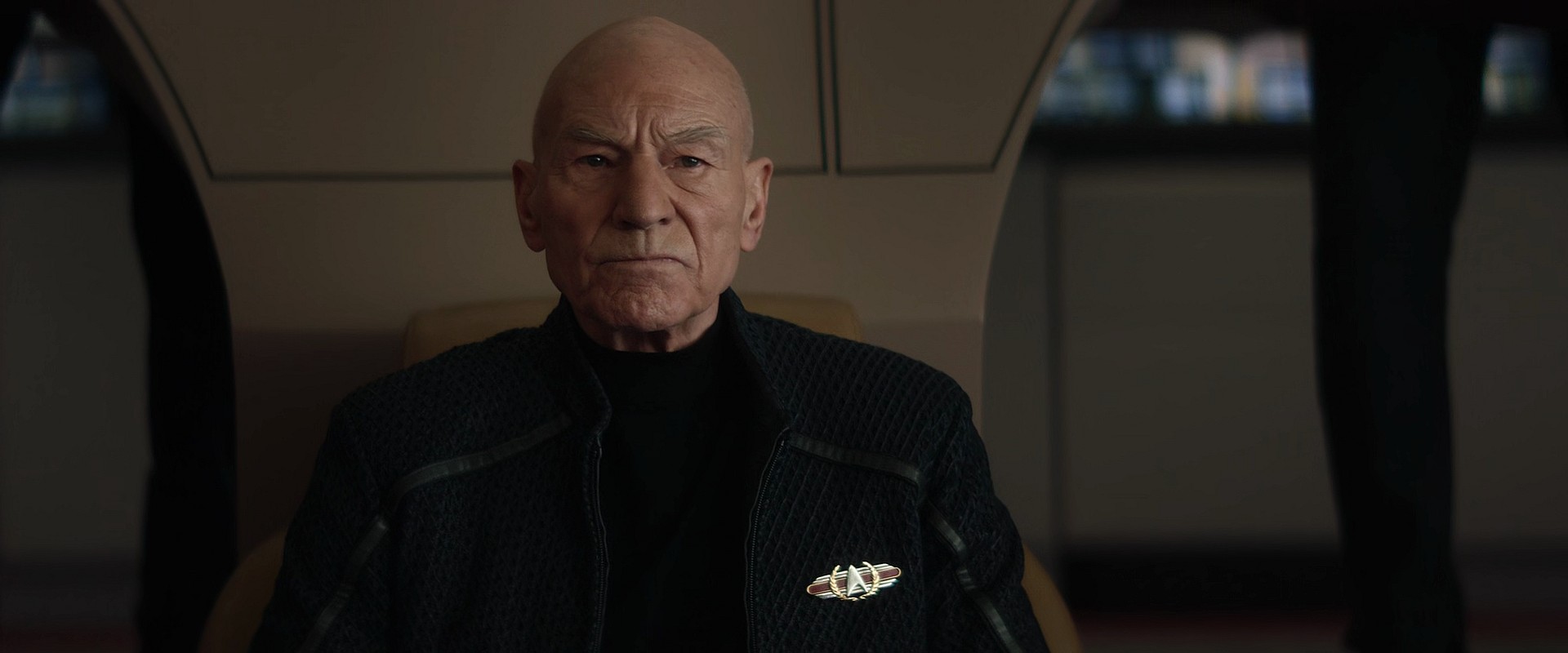
The first two seasons of the show were a total mess, but it was the second that did the most damage to the TNG timeline. The writing was abominably bad, the overt political messaging was tiresome and irritating, and its character development was some of the worst ever glimpsed on any sci-fi show.
Multiple plotlines converged, each one having little-to-nothing to do with the other, leaving a tangled mess in its wake. Picard had utterly failed as a show, which is perhaps why this follow-up season was set to be the last.
And now, we have it – season three of Star Trek: Picard – a desperate attempt to right the wrongs of the first two seasons by relying near-exclusively on nostalgic cameos, musical cues and lore references, to fool audiences into thinking Kurtzman and company are actually serious about this franchise.
Is it as terrible as seasons one and two of the show? Not actually, which is why this review is so difficult for this writer, who grew up loving every single episode of Star Trek: The Next Generation – a show that helped forge and refine my own character and moral compass.
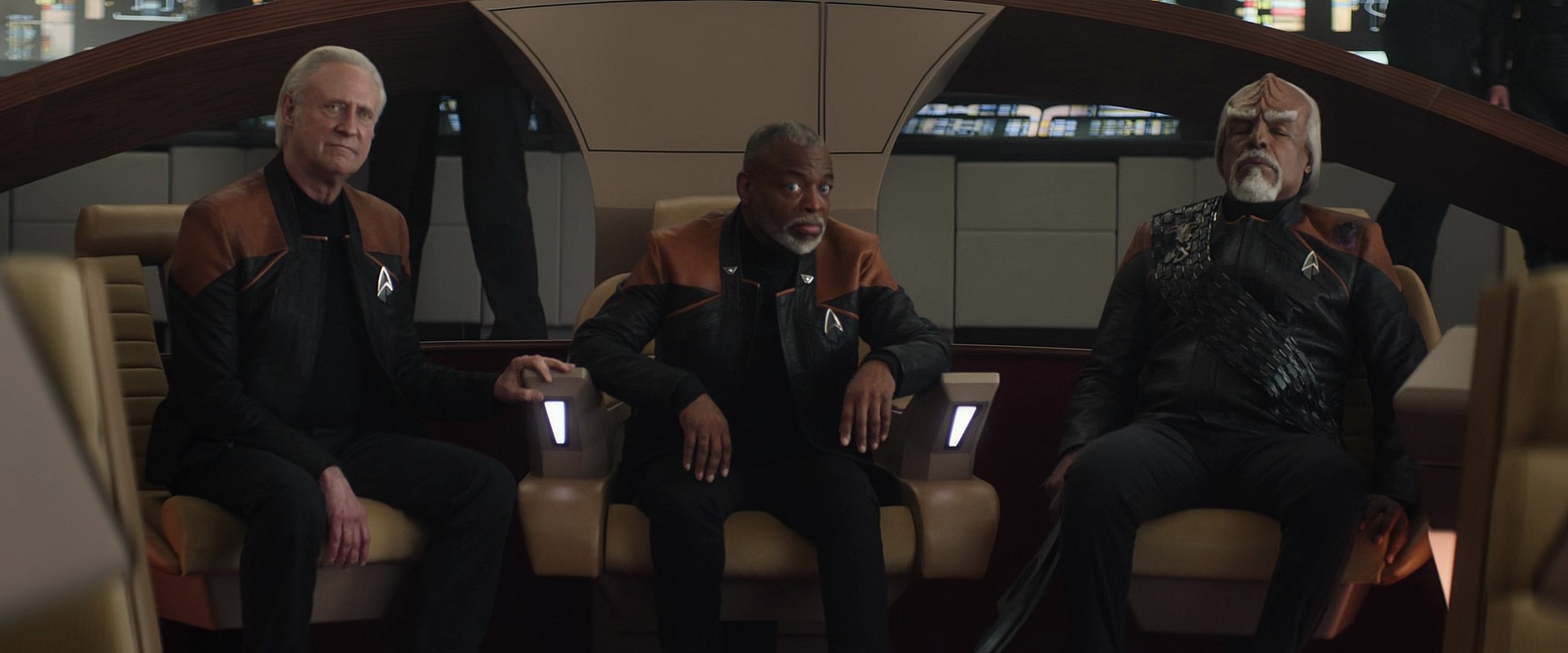
THE STORY
After successfully completing Q’s little time-traveling test and making nice with the Borg in season two, Jean-Luc Picard is back home and fostering his newfound romance with Laris.
Late one night, he receives an encrypted communication from his old crewmate and romantic flame Beverly Crusher, who has been critically injured and requests his help. She also advises him to trust no one and to keep Starfleet out of it.
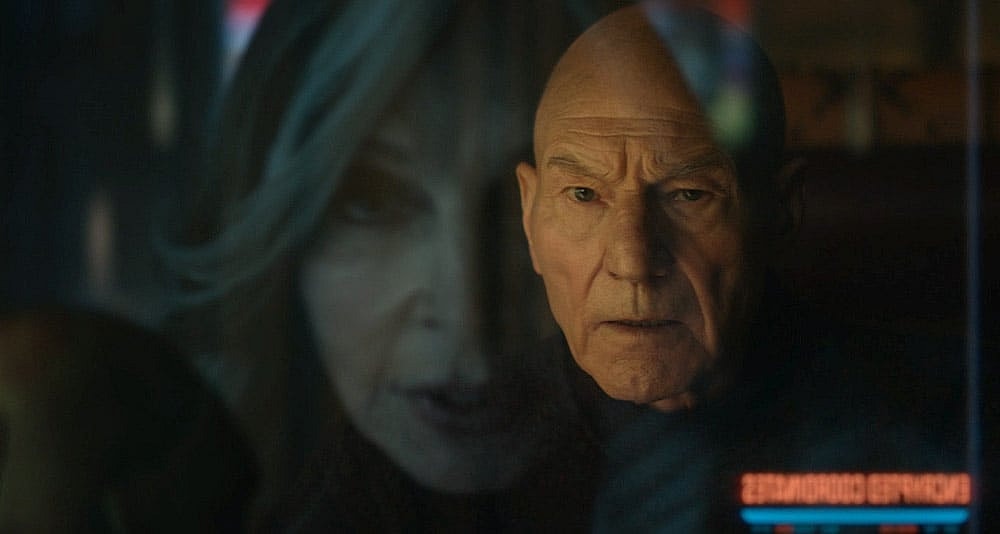
Picard meets up with his former first officer William Riker and the two discuss the issue at length. They formulate a plan to make it to the edge of Federation space where Beverly is supposedly hiding from a group of lethal marauders.
Hoping to rely on their legendary prestige and clout, Picard and Riker fake a surprise inspection on board the U.S.S. Titan, which is Captained by Liam Shaw, a man with no particular love for either.
When he refuses to meet their demands, Shaw’s first officer Seven of Nine intervenes and changes the Titan’s course without the Captain’s knowledge. There, Picard and Riker manage to find Crusher’s damaged ship, with her critically wounded body inside a stasis pod.
They also encounter another individual, a young man named Jack, who just happens to be Crusher’s son. It soon becomes clear that Jack is the offspring of both Beverly and Jean-Luc from a brief earlier romance.
Lurking in the shadows is a mysterious force seeking to apprehend Jack, which itself is part of a much broader conspiracy to take down Starfleet. One of the principle architects of this conspiracy is Vadic, a bounty hunter with an incredibly powerful and terrifying warship at her disposal. She initiates a cat and mouse chase against the Titan, prompting the woefully outmatched ship to utilize every trick in the book to stay one step ahead of her.
As the season progresses, multiple plot arcs unfold that culminate in a final and decisive battle for the fate of the entire Federation, as well as the galaxy itself.

THE GOOD
In contrast to the failed template of seasons one and two, this third season of Picard seems to acknowledge its past mistakes with surprising self-awareness. The entire formula has received a top-to-bottom (and back again) overhaul, bringing it more in line with the aesthetics and feel of classic TNG.
This applies to literally everything, right down to the original TNG font used in the opening and closing credits.

Even the lengthy, clichéd intro from the first two seasons has been vaporized in favor of something far closer to traditional Trek look and feel.
It’s obvious that season three of Picard is representative of the showrunners making a drastic course correction, especially given the fact that most of the classic cast make a return. It may still be called Picard, but season three is a thorough ensemble affair right from the beginning – and it shows.
There’s a much heavier focus on Starfleet-related stuff, as well. The first two seasons of the show largely kept the Federation out of the picture, with only glimpses of classic ships and uniformed personnel. Here, the organization is front and center, with many of the classic underpinnings of traditional Trek.
There’s an actual crew working on an actual starship, engaged in actual Starfleet duties, which has been missing from this particular timeline for a while.
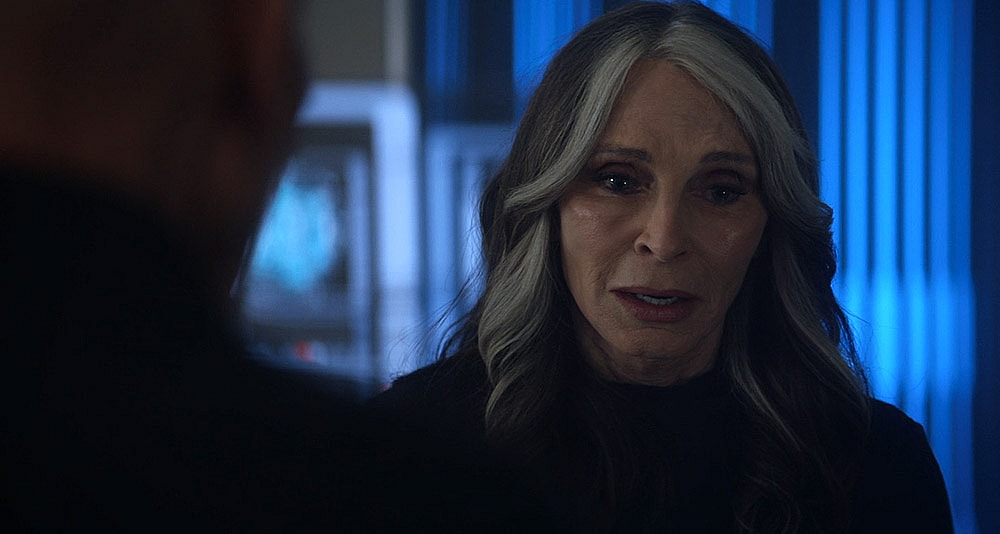
Meanwhile, seeing the old cast back together is something of a double-edged sword. While the cast should be commended for delivering some of their best acting chops in TNG history, it’s sometimes a mixed bag. Certain characters are given plenty of leeway to open the emotional floodgates and create any number of riveting and emotional scenes while others just feel awkward and out of place (More on that later).
Those particular characters given good lines seem to throw their entire heart and soul into it. Gates McFadden is a stellar standout, playing Beverly Crusher with a level of emotion rarely glimpsed even in the best TNG episodes. LeVar Burton also delivers some spectacular acting, even if his character starts off rather weird, and by the end of it all he’s playing Geordi La Forge far beyond the boundaries of the already-established character.

Jonathan Frakes is a major linchpin in season three, and he returns to the role of William Riker as if he’d never left it. That’s a good thing, because he elevates the story in a way that wouldn’t otherwise have been possible. Frakes seems to have an indominable amount of energy, and his slightly juvenile character traits help liven up the plot, whether he’s in a pickle, or taking a victory lap.
When paired with Patrick Stewart, who seems to take the subject matter far more seriously this season, it’s a winning combo.
Stewart also cranks out some of his most authentic acting, and actually does Picard some real justice. However, the real shining gem of the season is the villainous Vadic, played with gob smacking excellence by actress Amanda Plummer (Pulp Fiction, The Hunger Games, The Blacklist).
The mystery surrounding Vadic’s character is slowly unraveled over the course of several episodes, and in comparison to the anemic and toothless villains of seasons one and two, Vadic is genuinely authentic, and equally terrifying.

Plummer sells the character with brilliant acting prowess and steals every scene she’s in. The actress dances seamlessly between multiple emotions and thought patterns, from sadism, to amusement, to bloodthirsty hatred, to fear, to paranoia.
She’s a multifaceted villain so far past the point of return that she represents a very real and serious threat. When she’s leading a scene, anything can – and does – happen. Unfortunately, the backstory surrounding the character is one of the worst aspects of the show, but that doesn’t change Plummer’s knockout performance.
In terms of action spectacle, season three is a massive winner. Whether the budget has been increased or not – I simply don’t know – this entire season feels like a much more polished and focused affair. There’s a breadth of action in practically every episode, and it’s all good stuff.
Space battles, phaser shootouts, melee combat – it’s all here, and it works. The visuals are stunning, and the action benefits from all the detail, even if the premise of certain scenes are just too far-fetched.

And finally, there’s something to be said for all of the nostalgic references stuffed into the season, most of which tend to work. Near the end, the nostalgia rollercoaster goes off the rails, but the ride is enjoyable while it actually lasts. For the first time in a long time, it feels as if there’s some actual love for The Next Generation, rather than controlled demolition taking place around its foundations.
One of the best examples occurs in the fourth episode, “No Win Scenario,” which is the culmination of a dark and brooding tone built up since the first episode. The entire plot arc is dreary and hopeless, which would normally be par for the course with Kurtzman-era Trek. However, the fourth episode ends on a spectacular and beautiful note with the crew not only escaping imminent death, but also bearing witness to the creation of a wondrous new spacefaring species.
This, right here, is what Star Trek is supposed to be about, and for a brief moment, the showrunners and writers actually get it.
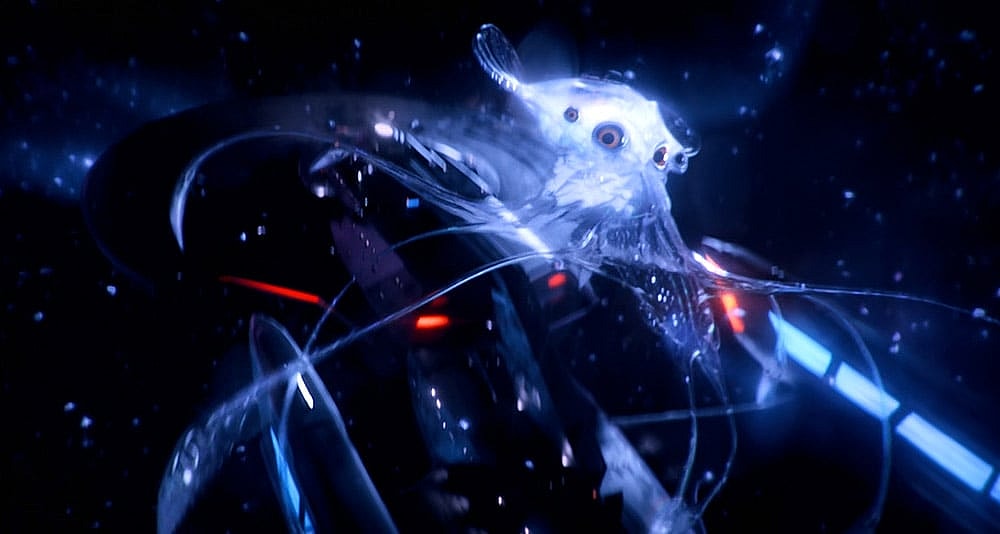
THE BAD, PART 1 (CHARACTERS)
And now, it’s time to address the inevitable, not to mention prolific negatives of season three, which countermand all the good will and bullseyes previously mentioned.
Picard is a show that has suffered from horrific writing since day one, equal to some of the most juvenile and incompetent fan fiction ever to litter the back alleyways of the web.
While season three does manage to elevate the writing quality by leaps and bounds over the previous seasons, it still falls into the same fan fiction trap as before.

This comes mostly in the form of multiple intersecting plotlines that are done solely for the purpose of convenience. The universe does not, in fact, run so perfectly as to allow individuals to cross paths with such ease, especially given the events of previous TNG episodes and movies. Yet, here, the objective is to bring the classic cast back together, come hell or high water, for one final kick at the can. That’s all well-intentioned, but the road to reunification is about as likely as successfully wrestling a salt water crocodile into submission.
Certain character returns feel absolutely spot on, such as Riker, Beverly, La Forge, and Seven of Nine. They make sense within the context of the events that have already taken place, and their involvement contributes to the actual story. However, other characters like Worf, Data, and Ro Laren feel like square pegs hammered haphazardly into round holes, and existing only as massive, confusing distractions who don’t serve the broader story.

For instance, Worf’s return is done with a level of disrespect so appalling that Michael Dorn should sue for character defamation. He’s nothing but a walking punchline – a former Klingon warrior who slayed Duras, fought in the Klingon Civil War, and became a hero in the Dominion War – who now walks the path of a pacifist who drinks chamomile tea in between beheadings.
Nearly every line of his dialogue is designed for comic relief and they leave Worf a pathetic and frail shadow of his former self. It’s egregious and disgusting, not to mention a terribly cruel way to end his character.

Meanwhile, Ro Laren’s return is something of an unexpected and pleasant surprise, at least on the surface. It quickly becomes apparent that her reappearance on the show is merely convenience, especially given the manner in which she left Starfleet.
Yes, it does give an opportunity for Picard and Laren to confront each other regarding one of TNG’s most heartbreaking storylines, but it’s rushed to death…literally. Laren dies in the very same episode she appears in, and it isn’t long before the entire crew callously disregards her demise like an afterthought.
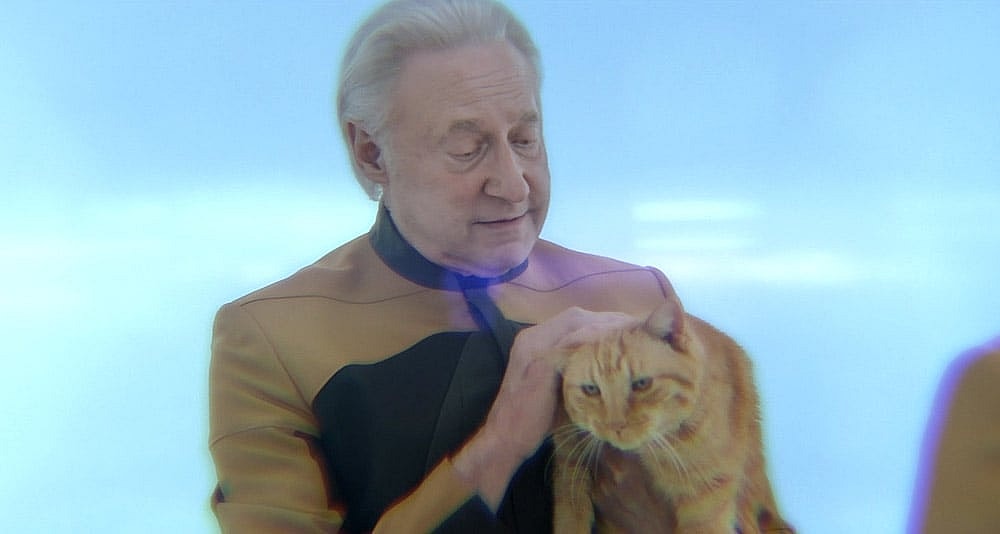
And finally, there’s Data. It feels like the showrunners are contractually bound to bring Brent Spiner back to every single Star Trek property, at one point or another. When he’s not busy playing yet another Soong character, he’s rehashing the Data role in some form, but it just doesn’t work here. Spiner is one of my personal TNG favorites, and I have nothing against him whatsoever, but here, Data is brought back solely for the purpose of cheap fan service, and feels like the equivalent of nabbing that one baseball card not because you really wanted it, but because you needed to complete the set.
To achieve said return, an implausible and terrible plotline is concocted whereby Data is actually the operational and advanced AI of the highly secretive Daystrom Station. Riker, Worf and Raffi discover this truth when they infiltrate the station to find out what was stolen by Vadic. There, they find the body of an advanced android containing the personalities of Data, Lore, B-4, Lal and Altan Soong, and free it for the purpose of reconstituting and resurrecting Data.
What a silly premise, especially given the disastrous events of episodes seven and eight, where Lore’s personality becomes dominant and threatens the lives of the Titan’s crew. There’s no reasonable explanation for why Starfleet would ever risk Lore gaining control of Daystrom Station, which houses some of the most advanced and destructive weaponry and relics in the known galaxy. The proof is in the pudding when that scenario actually unfolds, but you’re meant to ignore it, because after all…Data’s coming back!
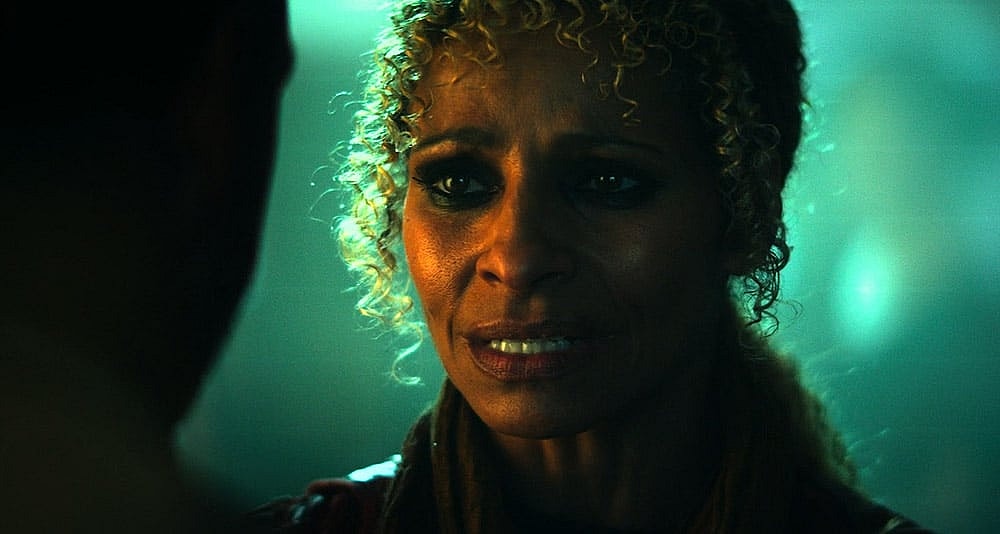
The payoff isn’t nearly as bountiful as longtime TNG fans would have liked. Data isn’t really Data, but rather, an amalgamation of several different personalities that have turned him into a new kind of being. In truth, this entire subplot is superfluous, and it’s around this time that, coincidentally, the worst of the fan fiction starts to emerge.
After Vadic and her forces are vanquished, there are only two episodes left to address the real, actual threat of the season, and it’s as predictable as one might expect.
And then there’s Raffi, a character who becomes more and more insufferable as each season progresses. She’d almost be an interesting character if it weren’t for her complete lack of a sensible arc.
In season three, Raffi can’t decide if her career in Starfleet is a blight on her existence that has caused misery and anguish at every turn or if she adores the job and can’t get enough of it. In between swapping waterworks for knife fights while battling chronic substance abuse, she’s steadily failing her way upwards through Starfleet’s ranks, ultimately landing the rank of Commander and first officer.

When it comes to ancillary characters, there are a few notable cameos that pay nods to longtime fans, such as Elizabeth Dennehy’s return to the role of Elizabeth Shelby from the classic TNG story “The Best of Both Worlds.” Here, Shelby has been promoted to the rank of Admiral in a fitting turn of events, but unfortunately, it’s hampered by a rather disrespectful and untimely death scene that follows almost immediately on the heels of her reintroduction.
One of the standouts of the show is undoubtedly Jack Crusher, a character with some actual weight who contributes to the overall story. He’s the centerpiece for the entire season, even if his full character arc is tied to a preposterous final plot twist.
Jack is more than just an interesting character. He’s also a vehicle through which important subjects can be discussed, such as mothers cutting fathers out of their child’s lives, and the unexpected soul-enriching benefits of actually having children in the first place.
He’s also far more interesting than Wesley Crusher could ever hope to be.

THE BAD, PART 2 (PLOT HOLES GALORE)
When writers get over their skis in an attempt to craft something bombastic, they inevitably step on more than a few rakes in the process. Season three does this a lot. There are plot holes galore in almost every episode, and they really are noticeable. Here’s just a few of the worst offenders:
• Officers talking about pay grades in a society where money doesn’t exist.
• Quantum-tunneling technology used in a horrible terrorist attack just days before a major galactic celebration (and nobody seems to care).
• Firing phasers to prematurely detonate a photon torpedo when they can easily be detonated from the bridge controls.

• The use of photon torpedoes in an era when quantum torpedoes are the standard.
• A Changeling trying to kill Jack when their specific mission is to apprehend him safely.
• Riker leaving Troi to grieve over the death of their son, contradicting the events of season one.
• Picard’s Irumodic Syndrome is retconned away in order to shoehorn in the Borg plot arc with awkward force.

• Picard using the Holodeck while the Titan barely has enough power for life support, which is explained away with another lazy excuse.
• The “hive mind” communication linkage of Starfleet ships is a massive and unforgivable security risk that even Seven of Nine makes fun of.
• Giving Data full access to the Titan’s systems at a time when Lore’s personality was still a very real threat.
• A Starbase enduring the punishment of the entire Federation fleet for what seems like an eternity.
It’s like a bad fingerpainting littered with inexplicable reasoning and/or total lack of explanations that don’t exactly help the show out in any meaningful way. All they do is raise more questions and give even casual viewers a reason to stop and say “Wait, hold up.”
This is a consequence of an overly ambitious story trying to cram so many things in at once. Things get missed, or they become inconveniences that the writers hope everyone will simply ignore. That’s disrespectful.
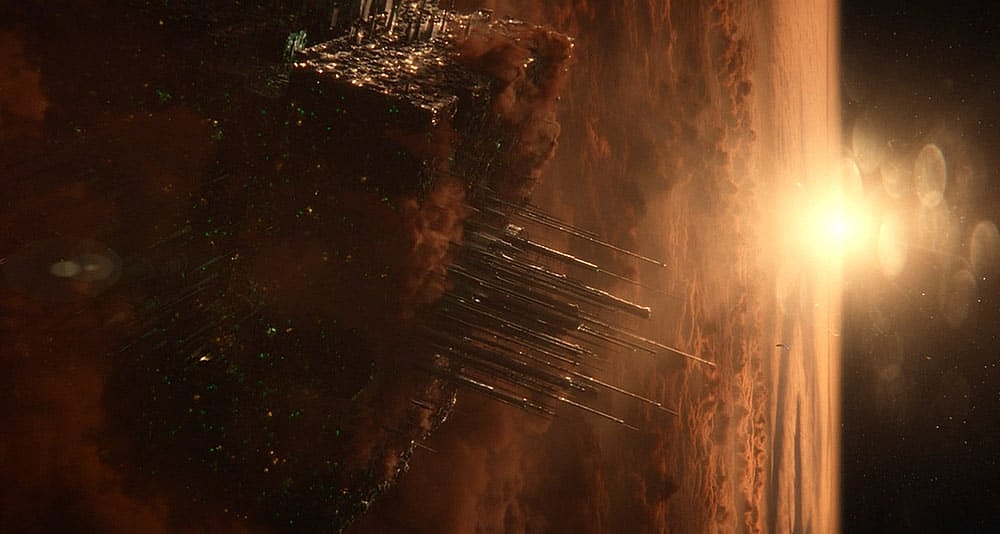
THE BAD, PART 3 (GRAPHIC VIOLENCE AND COARSE LANGUAGE)
There are certain entertainment properties that need to decide which lane they want to drive in, and Kurtzman-era Trek seems to have difficulty making the decision.
Star Trek has forever been a family show with family values attached to it, but the new guard in charge of the franchise have decided to fill it with seething antagonism, nihilism and behavior that was supposed to be gone by the time the 25th century rolled around.
And yet, Picard continues the same tradition of adult-oriented content that began with Discovery, and shows no signs of slowing down.

The bad language is back in full force, though the showrunners have decided to drastically cut down the number of F-bombs in season three (three, as far as I could count), one of which is uttered by Picard himself, because why not ruin the character further?
Then, there’s the graphic violence and cruelty that imposter-Trek is well known for, and it’s back in full force here. Beheadings, impalements, torture, exit wounds…it’s all fair game. All this does is cheapen and disrespect Gene Roddenberry’s vision for the show, while making it off-limits to younger viewers who would otherwise benefit from Star Trek’s messaging.
That’s not the case, anymore. New Trek is a constant barrage of 21st-century problems, including rampant drug use, antagonistic relationships, a ruined future aesthetic, and mindless hedonism. The excuse given might be that the showrunners wanted to produce a gritty and more realistic portrayal of the seedier aspects of 25th century galactic life, but that’s simply not necessary. All it does is poison the well, and turn Star Trek into a bleaker and uglier version of its former self. There’s enough rottenness in the world to go around for millennia, so why contribute more to the problem?
It should be said that season three does actually portray Starfleet in a more positive light. Even Liam Shaw, the antagonistic Captain of the Titan, has his reasons for being who he is, and they are rectified near the end of the show when he reveals his inner nobility. It’s a far cry from Picard running down Starfleet the same way he did in season one, but it’s still not perfect.

THE BAD, PART 4 (DECONSTRUCTING STARFLEET)
Like everything in season three, there’s a negative counterweight attached to every single positive.
Once again, Starfleet is shown to lack a moral compass, this time taking the form of the animosity between the Changelings and the Federation, which was sparked during the Dominion War. That original conflict, which broke out on Star Trek: Deep Space Nine, was an attempt to show that not everything in the 24th century was as rosy as other parts of the galaxy. The Dominion waged war against the Federation with bigotry at their back, and it forced the latter to go to extreme lengths in order to survive.
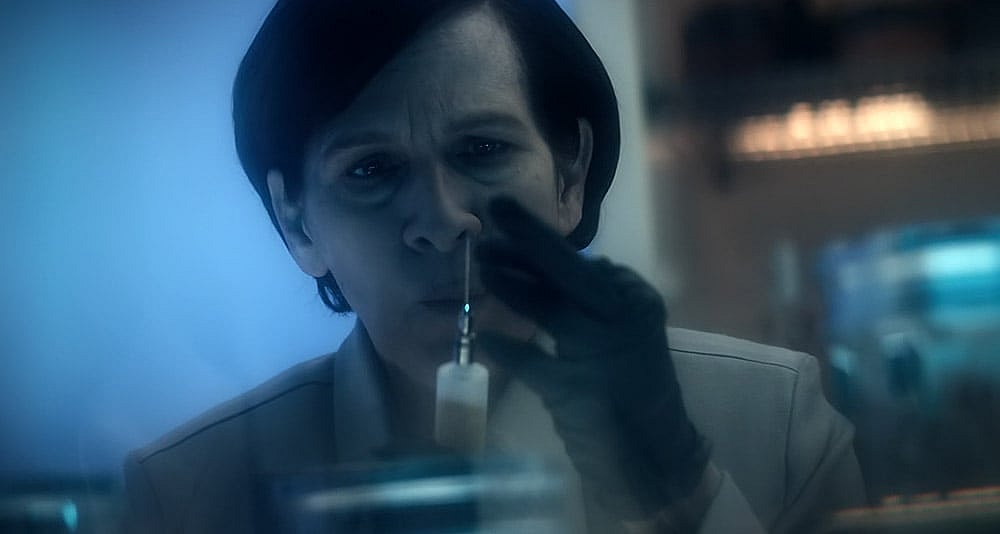
That’s not enough for the storyline in Picard, though. No, instead, the Federation is depicted as a group of immoral, sadistic torturers who performed vicious and horrific experiments on Changeling prisoners in an attempt to develop a new kind of weapon.
As mentioned previously, Vadic is a superb and truly excellent villain, but her hatred was forged from the fires of a truly ugly plot arc. It’s revealed that Vadic was cruelly experimented on, which gave further rise to her hatred of “solids” and even her desire to assume the form of her scientific torturer as a reminder of what she’s endured.
This is a slap in the face to Roddenberry, who’s likely rolling over in his grave for the umpteenth time. The allure of Star Trek lay in its idealism for a better future where humanity cast off the shackles of its own cruelty and malice. Instead, the writers of Picard insist that humanity hasn’t budged an inch in 400+ years, and is still subject to the same primal evil as today. What type of message does this send to children watching the show? What does it say about the Left’s nihilistic take on humanity?
Surely, there’s a political element to all of this. The Left have become a death cult whereby every single policy is designed to end life. It’s driven by a singular hatred of the human species as a whole, and exercised in pro-abortion policies, the sterilization of youth via transgenderism, and the call by many-a-Leftist for the extinction of the human race for the sake of the planet’s well-being. This poison trickles down inevitably into pop culture, and it’s on full display in season three of Picard, which makes the same clichéd Left-wing argument as usual – humanity hasn’t moved forward an inch and will always suck, no matter what.

THE BAD, PART 5 (THE BORG CRUTCH)
Yes, the Borg are the main baddies of the season, and their big moment was intended to blow the minds of longtime fans. Unfortunately, the Borg already made appearances in the first two seasons of the show, with heavy emphasis on the second, so…why should the audience feel any surprise?
The introduction of the Borg plot arc damns the show to jump the shark by force, and the entire story falls apart as a consequence.

It’s all tied to Jack Crusher, a character who, surprisingly, is quite interesting and likeable. Played superbly by actor Ed Speeler, he starts off like an entitled brat, but it soon becomes clear that there’s far more to his character than meets the eye. Over the course of ten episodes, Jack becomes a linchpin of the entire season.
However, his latent telepathic abilities are tied directly to the Borg plot arc, and it just doesn’t work. The explanation is that the Borg injected Jean-Luc Picard with an experimental biological compound when he was assimilated and turned into Locutus, which laid dormant for decades after his rescue. The sexual affair with Beverly Crusher passed this dormant code to Jack, who became a vessel for a new kind of Borg hegemony.
This ties into a bigger narrative where the Borg ally themselves with the Changelings to spread a kind of viral code throughout Starfleet’s transporter systems, effectively pre-assimilating all young officers until such time as they needed to be activated. The end goal is for the Borg to weaponize these officers to take over every ship in the fleet, making an assault on Sector 001 that much easier.

It’s a preposterous notion that requires suspension of disbelief far beyond even a sci-fi show of this particular magnitude. It also opens up tons of plot holes and inconsistencies that don’t make any sense.
For instance, the Changelings steal the dead biological body of Jean-Luc Picard, specifically to access the Borg DNA alterations in his parietal lobe. How did they know about these alterations in the first place, especially given that Altan Soong, a man who violated Federation law several times, was the one who discovered it at Daystrom Station?
Further, given that these particular Borg are the same the U.S.S. Voyager encountered in the Delta Quadrant, why wouldn’t Seven of Nine have known of this particular plan?
But wait, the nonsense doesn’t stop there! For some reason, nobody noticed a humongous Borg transwarp conduit sitting inside the gasses of Jupiter. How did it get there? Weren’t the Borg who came through the transwarp conduit in the final episode of Voyager all destroyed? How exactly did it get there?
Diehard defenders might reference the Borg from season one of the show, but that explanation doesn’t fit. Neither does the presence of the Borg in season two, which the showrunners have already claimed (out of convenience, no doubt) are a splinter group unrelated to the Borg of the primary universe.
Speaking of season two Borg, where are they? Didn’t Agnes Jurati coalesce with the Borg Queen to create a new, benevolent Borg race friendly to Starfleet? Where are they, and why weren’t they summoned to help in the fight? There isn’t a single mention of them throughout the entire show.

THE BAD, PART 6 (AN UNFULFILLING ENDING)
The final episode tries to tie it all up while simultaneously relying on the return of the classic Enterprise-D to fool everyone into thinking the writers have things under control. They then go on to rip off the Death Star reactor run from Return of the Jedi while battling Borg using outdated weaponry that the Borg should have already adapted to decades ago! Common sense goes out the window when the final plot arc involving Picard trying to reason with the newly-Borg’ed Jack turns into a device of pure convenience.
Not even the horribly disfigured visage of the Borg Queen can turn things around – In fact, it feels nothing short of exploitation.
When the dust settles, there’s just enough time left to end the TNG story on a high note, and it’s done with equal parts brilliance and stupidity. For some oddball reason, the U.S.S. Titan is rebranded as the U.S.S. Enterprise-G, with Seven of Nine as Captain and Raffi (of course) being first officer.
That nonsense cuts away to the TNG crew enjoying time in Guinan’s bar (who is nowhere to be seen), where they share old memories, and play poker until the credits roll.
And then it’s back to stupid again, with Q making a reappearance in a post-credits sequence to confront Jack Crusher.
“I thought you were dead,” Jack remarks, to which Q replies, “Oh, and here I was hoping that the next generation wouldn’t think so linearly!” Well, that sure is convenient, isn’t it? The ease at which incompetent writers rely on lazy explanations to try and justify spineless creative decisions is really quite astonishing.
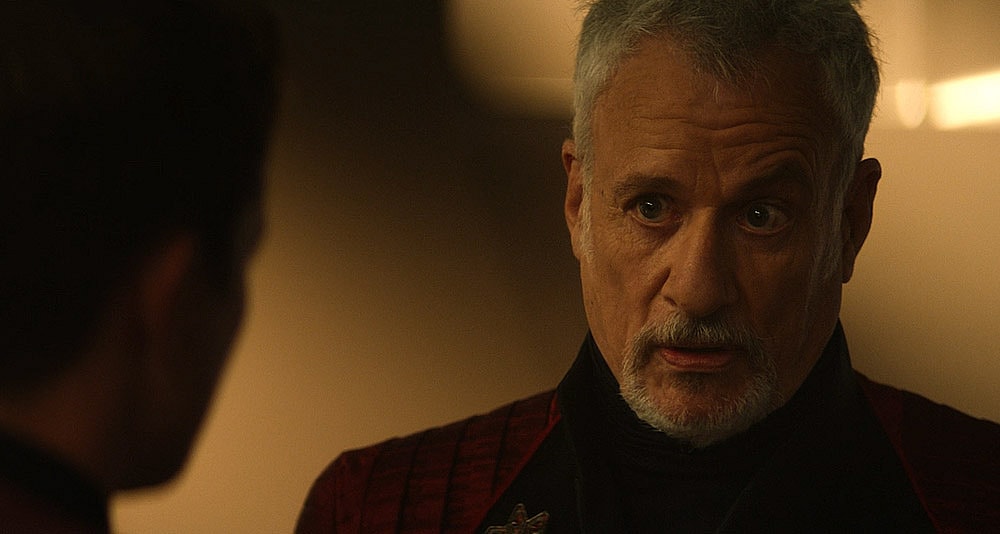
IN CONCLUSION
Season three of Picard is a maddening and frustrating mess. It darts back and forth between excellence and unfathomable stupidity with a lack of self-awareness rarely glimpsed in modern storytelling, and that’s saying a lot.
When the show does hit the mark, it does it with almost tactical brilliance, only to turn 180 degrees and run forehead-first into a bulkhead like Scotty in Star Trek V. In the meantime, it pads itself out with one thick blanket of nostalgia after another, which has the end result of making the viewer feel warm and cozy one minute and extremely uncomfortable the next.

If season three is guilty of anything, it’s trying to force too much all at once. The entire Borg plot should have been abandoned in favor of a more centralized story involving the Changelings, which would have felt a lot more plausible. Adding the Borg in at the end feels like desperation on the part of the writers and showrunners, who probably thought the season wouldn’t succeed unless they fell back on a clichéd and woefully overused villain that has since been defanged.
This just goes to show the complete lack of faith that the creatives at Paramount have in Star Trek, as a whole. They attempt to play it safe over and over again, while injecting their own priorities into the storyline. The merciful lack of Wokeness in season three is a welcome respite from the radical fundamentalist train wreck that was season two, but it almost feels as if there’s a vacuum waiting to be filled in its absence. When the writers can’t pad the story with Woke talking points, they find themselves struggling to come up with a cohesive storyline.
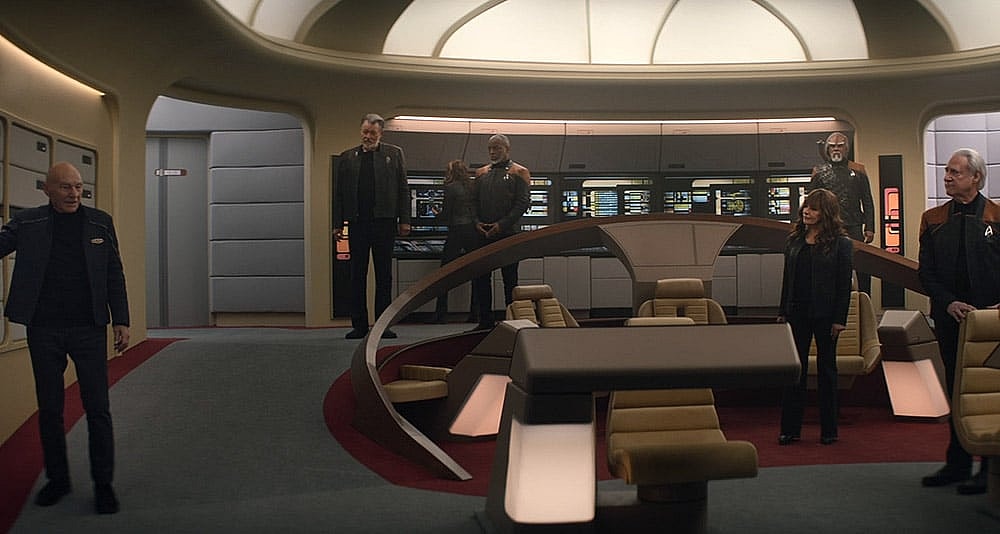
I will say that season three of Picard is easily the best of the bunch, and certainly better than anything Star Trek-related that has come from Kurtzman and company over the last fourteen-or-so years.
However, the man brought the bar down so low that even a fractional increase in quality feels like a galactic paradigm shift. At the end of the day, Picard is still a badly-written show. It’s just less badly-written than before.
Should you watch it? That’s a very hard question to answer. There were many moments in season three that I lauded and enjoyed, and just as many that caused me to double-facepalm like Picard in the classic TNG episode “Offspring.” It’s not a fantastic show, but it’s not a total train wreck, either. In comparison to season two, which I rightfully dubbed “unfathomable garbage,” season three can best be summed up as “bad fan fiction with noble conviction.” There’s a love for TNG here, to be sure, but it’s mired with incompetence and a remarkable lack of faith in its own fan base.
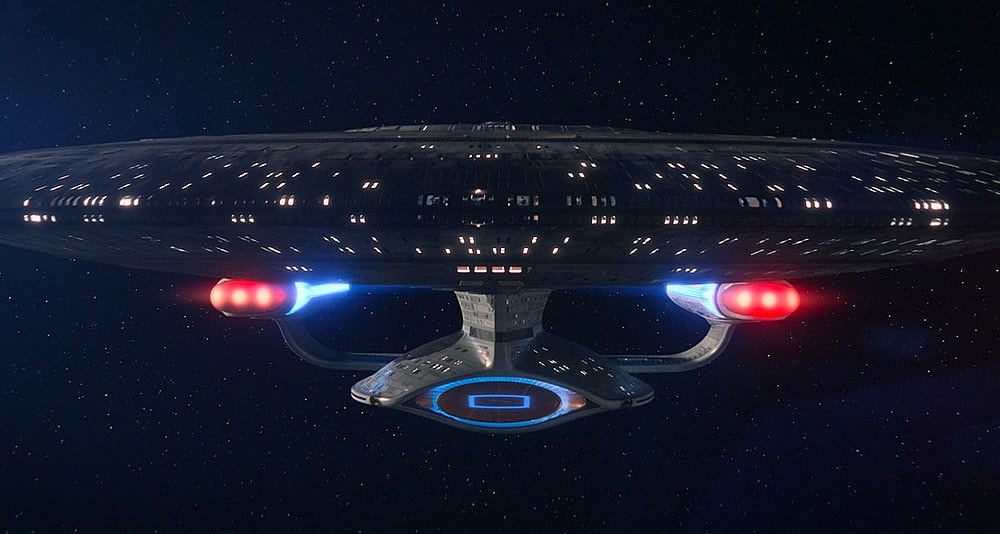
By all accounts, this is the final season of the show, and a swansong for the TNG crew as a whole.
It’s far from perfect, but it’s the best audiences are gonna’ get, and I suppose anything is better than the ambiguity left behind in the wake of Star Trek: Nemesis, but what’s presented here is a far, far cry from the glory days of Star Trek: The Next Generation, a show I shall revere and admire even on my death bed.
NEXT: Star Trek: Picard, Season 2 Review – Unfathomable Garbage
